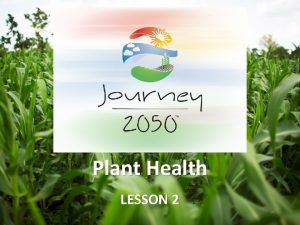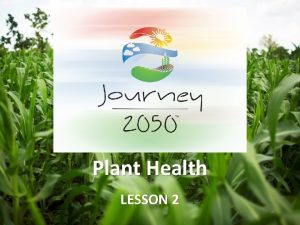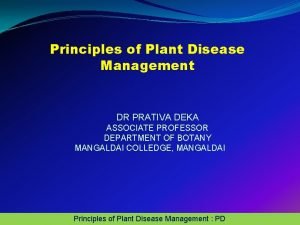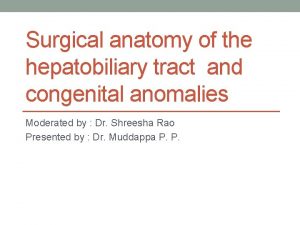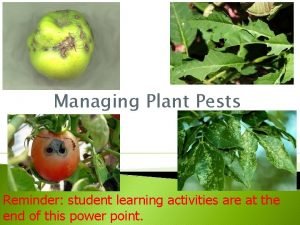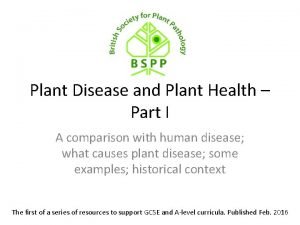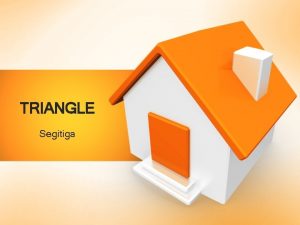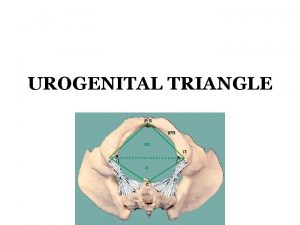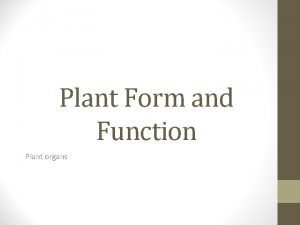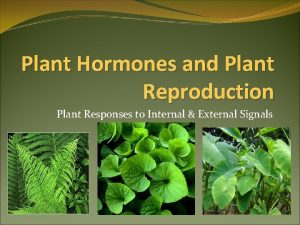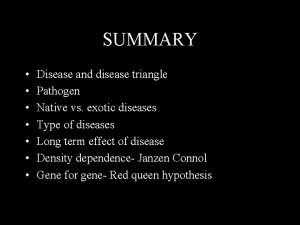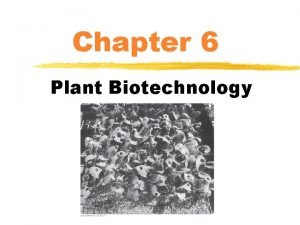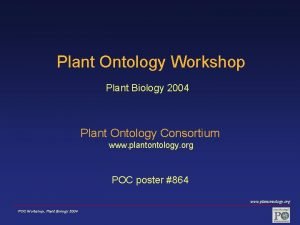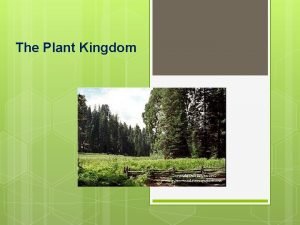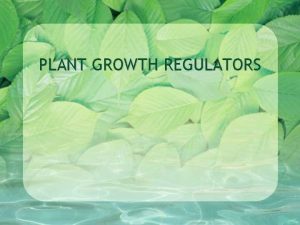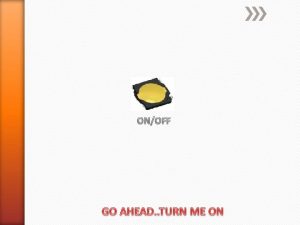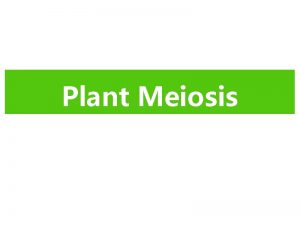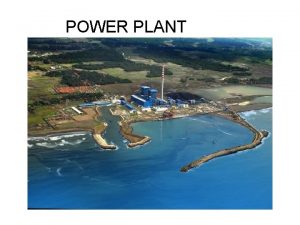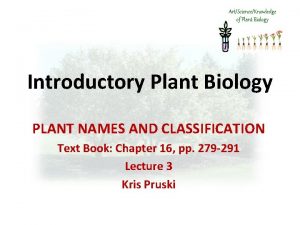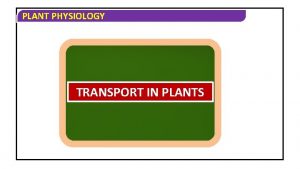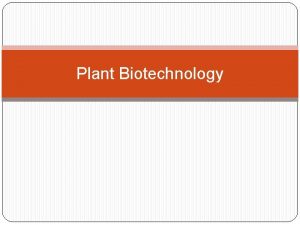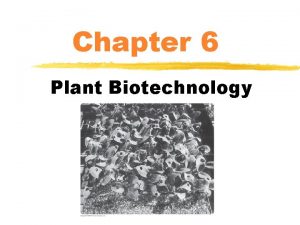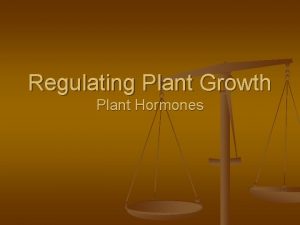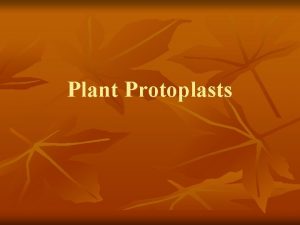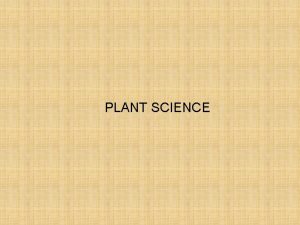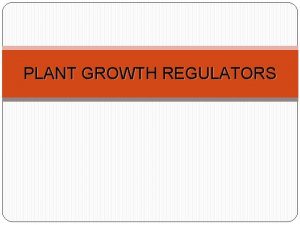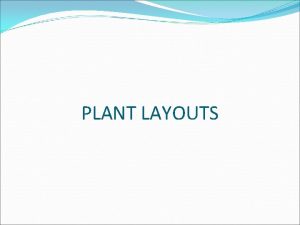Module 11 Plant Disease The Disease Triangle and

























- Slides: 25

Module 11: Plant Disease – The Disease Triangle and Management LSU Ag. Center Home Gardening Certificate Course Dr. Joe Willis, Dr. Paula Barton-Willis, Anna Timmerman & Chris Dunaway

If you fail to plan, you are planning to fail. Benjamin Franklin Failing to prepare is preparing to fail. John Wooden, UCLA Basketball Coach

A garden requires patient labor and attention. Plants do not grow merely to satisfy ambitions or to fulfill good intentions. They thrive because someone expended effort on them. ― Liberty Hyde Bailey (American horticulturist and botanist who was cofounder of the American Society for Horticultural Science)

Plant Disease Triangle Susceptible Host Virulent Pathogen D I S E A S E Conducive Environment

Breaking the Environmental Link Air Temperature? • Planting time (Plant crops in season) • Planting location (Next to a building, Sun - how much and when)

Breaking the Environmental Link Soil Temperature? • Planting time (Warm spring, Hot summer, Mild fall, Cool winter) • Planting location (Sun – how much and when, Roots shady or sunny) • Mulch (How much and what kind (color))

Breaking the Environmental Link Rainfall? • Planting location (Any shielding or overhangs) • Moveable containers

Breaking the Environmental Link Relative Humidity? • Planting density (Microclimates) • Planting location (Airflow barriers) • Irrigation (Time of day)

Breaking the Environmental Link Soil Moisture? • Irrigation (Amount, Frequency, Time of day) • Mulch (Depth, Type) • Organic matter

Breaking the Environmental Link Soil Moisture? • Gardening method (in-ground, raised beds, containers) • Drainage

Breaking the Environmental Link Soil Type? • Soil Amendments (Sand, Organic Matter, Clay) • Use of potting mix or topsoil

Breaking the Environmental Link Soil p. H? • Lime • Sulfur

Breaking the Environmental Link Soil Fertility & Health? • Organic matter (Compost, Manures) • Fertilizer (Organic, Chemical) • p. H (Nutrient availability) • Soil Aeration

Plant Disease Triangle Susceptible Host Virulent Pathogen D I S E A S E Conducive Environment

Breaking the Pathogen Link

Breaking the Pathogen Link Air Pollution Sun & Heat Cold Herbicide

Breaking the Pathogen Link Virulent Pathogen: Fungi, fungal-like organisms, bacteria, phytoplasmas, viruses, viroids, nematodes and parasitic higher plants are all plant pathogens. • Remove plant debris (keep it clean under and around your plants) • Remove diseased plant parts and diseased plants

Breaking the Pathogen Link • Control Insects (possible vectors) • Control Weeds (harbor disease and insects, vectors)

Breaking the Pathogen Link • Crop rotation • Soil solarization • Mulch - to prevent splattering (Plastic, Straw)

Breaking the Pathogen Link • Irrigation – type, timing (fungal spores need water for 2 hours) What part of the plant needs water? • Sanitation – Tools, Clothing, Shoes

Plant Disease Triangle Susceptible Host Virulent Pathogen D I S E A S E Conducive Environment

What Does A Healthy Plant Look Like!!

Breaking the Host Link • Crop Rotation – Rotate crop families at least every other season • Fallow Ground – Allow the ground to remain fallow for a season

Breaking the Host Link • Grow Resistant Cultivars • Use Disease-Free Seed • Use Grafted Plants – Tomatoes, Eggplants, Peppers, Squash, Cucumbers, Melons

Please post all your questions and results to the message board that was emailed to you. https: //www. facebook. com/groups/53815 3443545779/
 Bharathi viswanathan
Bharathi viswanathan Which nutrient practice was best journey 2050
Which nutrient practice was best journey 2050 Journey 2050 student handout 4 matching activity
Journey 2050 student handout 4 matching activity C device module module 1
C device module module 1 Tronsmo plant pathology and plant diseases download
Tronsmo plant pathology and plant diseases download Tronsmo plant pathology and plant diseases download
Tronsmo plant pathology and plant diseases download Tronsmo plant pathology and plant diseases download
Tronsmo plant pathology and plant diseases download Deka vitaminok
Deka vitaminok Plant introduction in plant breeding
Plant introduction in plant breeding Intraspecific hybridization
Intraspecific hybridization Plant introduction in plant breeding
Plant introduction in plant breeding Charcot triangle
Charcot triangle Disease triangle
Disease triangle Causal agent of tobacco mosaic virus
Causal agent of tobacco mosaic virus Hình ảnh bộ gõ cơ thể búng tay
Hình ảnh bộ gõ cơ thể búng tay Frameset trong html5
Frameset trong html5 Bổ thể
Bổ thể Tỉ lệ cơ thể trẻ em
Tỉ lệ cơ thể trẻ em Voi kéo gỗ như thế nào
Voi kéo gỗ như thế nào Tư thế worm breton là gì
Tư thế worm breton là gì Hát lên người ơi alleluia
Hát lên người ơi alleluia Môn thể thao bắt đầu bằng chữ f
Môn thể thao bắt đầu bằng chữ f Thế nào là hệ số cao nhất
Thế nào là hệ số cao nhất Các châu lục và đại dương trên thế giới
Các châu lục và đại dương trên thế giới Công thức tiính động năng
Công thức tiính động năng Trời xanh đây là của chúng ta thể thơ
Trời xanh đây là của chúng ta thể thơ

